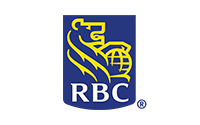 The Value of Defining & Implementing Team Norms
The Value of Defining & Implementing Team NormsIt is a common practice to develop team norms when working with teams. However, I have discovered that while many teams do this or have done it in the past, it is often poorly done and executed.
The way you behave as a team is governed by a set of unwritten rules and behaviours which make up your team culture. Formally defining these behaviours as team norms has been shown to influence trust, accountability and responsibility in the team.
These written norms can be anything from how a team communicates, meeting etiquette, how you socialize as a team or how decisions are made. Most often, teams define which behaviours are important to that team and capture them in a shortlist.
Tips for Developing Team Norms
- You should be able to describe what you would see or hear a person say. E.g. “We address conflict early and at the source.”
- Use everyday language. E.g. instead of “accountability,” try “we do as we say and we call each other out”
How To Embed Your Team Norms In Day To Day Practice?
Have you ever invested time in developing norms only to end up with a load of dusty post-it notes and a photo of a flipchart or whiteboard buried deep in your iPhone gallery? Here are some tips to avoid that.
- Print them out and stick them on a wall or place in a brochure holder on the meeting table.
- Have them as a laptop screensaver
- Add them to meeting agendas
- Print them and post inside a duotang/journal cover for reference if you use one.
- Reflect on them at the beginning of the meetings.
- Check-in at the end of meetings to see how they have been supported. Discard the ones that don’t need attention to them.
- Practice calling them out – come up with a unique gesture/name that focusses on interrupting the process versus blaming the individual.
- Keep it as a living document – add new ones as needed.
- Make a set of coasters or mugs with one norm on each of them.












